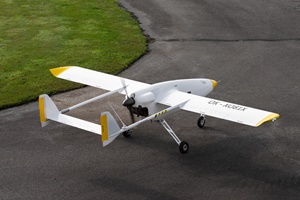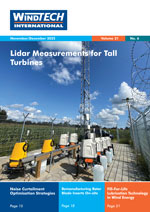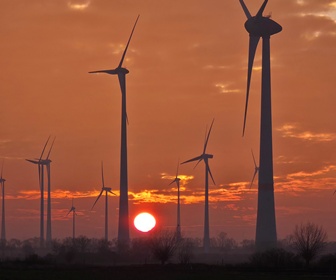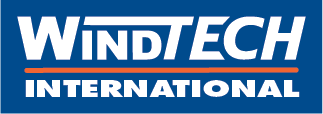 The SeaMe project (Sustainable ecosystem approach in Monitoring the marine environment) is trialling new techniques to make environmental monitoring around offshore wind farms less invasive and more sustainable. Tests are being carried out at RWE’s 342 MW Kaskasi project, 35 kilometres off Heligoland.
The SeaMe project (Sustainable ecosystem approach in Monitoring the marine environment) is trialling new techniques to make environmental monitoring around offshore wind farms less invasive and more sustainable. Tests are being carried out at RWE’s 342 MW Kaskasi project, 35 kilometres off Heligoland.
A long-range drone operated by BioConsult SH has completed its first flights over the wind farm and neighbouring areas. The Primoco UAV One 150 can stay airborne for up to 15 hours and is fitted with a HiDef video system consistent with existing aerial survey standards. BioConsult SH says the method can cut the carbon footprint of monitoring by up to 90 percent compared to planes or ship-based observers.
Six cameras have also been installed on two turbines to record bird behaviour continuously. Spoor’s artificial intelligence system analyses the footage to detect and identify species, while additional equipment is being tested for night-time monitoring.
Underwater, long-term video systems developed with Danish start-up Anemo Robotics are capturing regular clips for artificial intelligence analysis. In parallel, an autonomous underwater vehicle from the German Research Center for Artificial Intelligence has been tested for the first time. Equipped with cameras, sonars, and oceanographic sensors, it can track marine life and collect environmental data.
Researchers are also analysing environmental DNA from seawater samples. Scientists from the Helmholtz Institute for Functional Marine Biodiversity and the Alfred Wegener Institute have already identified 143 species near Heligoland, including harbour porpoises.
The three-year SeaMe project brings together HIFMB, AWI, BioConsult SH, DHI, Spoor, DFKI, and Anemo Robotics. RWE supports the work from its operations base on Heligoland.










